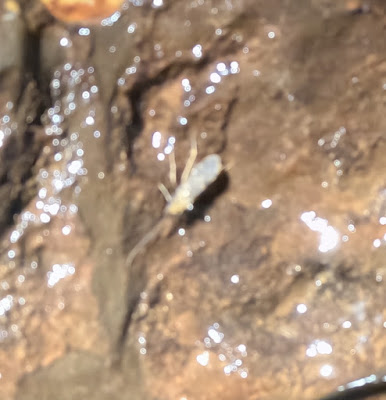13th July 2025
Chloe Francis and Stuart Bennett
South Wales Caving Club has a long standing tradition of Going For A Curry. Previous iterations of committees have aimed to finish a Saturday night meeting before 9pm, to allow enough time to race to Tiffin down the valley for dinner. For the decade or so that I have been a member, the 30th December has seen those visiting the club between Christmas and New Year venture out for a curry, or even order curry to the HQ.
This series of blog posts aim to review and highlight curry houses which may be combined with a caving activity.
| Welcome sign |
Curry was not on the plan today! However, after a gentle afternoon at Sell Gill - the objective being to practice my rigging skills - we discovered the Wheatsheaf in Ingleton no longer serves battered halloumi and chips. Disaster! As we were heading north back to Glasgow, Stu suggested that Spice Essence in Kirkby might be the next best option.
We arrived at 19:00 and were seated and served tap water immediately. We then promptly ordered a Coke and an alcohol-free Cobra. The restaurant stopped serving booze from 1st July 2025, but they still offered us the random selection of booze they had left (we declined).
The Coke arrived in a glass bottle (fancy), however it was room temperature (not fancy), albeit with a glass filled with ice. The food order was taken at 19:08. The poppadoms and dips arrived at 19:11. The pickle tray was bountiful: lime pickle, raita, mango (smooth) and onion salad. More lumpy mango chutney and even more lime pickle would have elevated this. No weird / delicious coconut - as is Swansea Style - was observed.
| Coke and AF Cobra |
The curry followed quickly after; it was hot and the portions were generous. The saag paneer had plenty of paneer. My aubergine dish was tasty - aubergines are great at taking on all delicious spicy flavours. Stu enjoyed his vegetable jalfrezi, which was slightly too spicy for my palate.
| Garlic Naan |
| Vegetable Jalfrezi |
| Saag Paneer and Brinjal Bhaji |
Total bill = sadly, I cannot find my receipt, but I think it was roughly £50. Spice Essence is cash-only, but there is a cash machine just across the road. While Stu is an almost faultless dining companion, I am interested in recruiting caving curry house reviewers who will go halves on one portion of rice and one naan with me!
5th August 2025
Toby Dryden
The esteemed Toby Dryden also visited this establishment on 5th August, with dining companions Jo White and Andrew McLeod. His notes are below:
Expectations were high. The poppadoms arrived with in 3 minutes! They were good, not greasy, but nice and crisp, I had Chilli Chicken Masala and a Garlic and Coriander Naan. This arrived within 20 minutes. The food was good, but not exceptional - it was more or less like every other one I've had. The naan was good: it wasn't covered in oil, not burnt and it had a nice texture. Toby score: 7/10. The staff let the place down for me, it felt like food was being thrown at us.
In conclusion, Spice Essence is a good alternative to the Settle curry house establishments, which are often frequented by SWCC during Yorkshire away-trips.




















